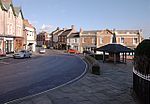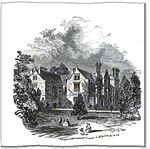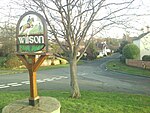Melbourne Hall
1631 establishments in EnglandCountry houses in DerbyshireGardens in DerbyshireGrade II* listed housesGrade I listed buildings in Derbyshire ... and 7 more
Grade I listed parks and gardens in DerbyshireHistoric house museums in DerbyshireHouses completed in 1631Melbourne, DerbyshirePrime ministerial homes in the United KingdomUse British English from February 2023William Lamb, 2nd Viscount Melbourne

Melbourne Hall is a Georgian style country house in Melbourne, Derbyshire, previously owned by William Lamb, 2nd Viscount Melbourne, British Prime Minister from 1835 to 1841. The house is now the seat of Lord and Lady Ralph Kerr and is open to the public. The house is a Grade II* listed building; more than twenty features in the grounds are Grade I listed.
Excerpt from the Wikipedia article Melbourne Hall (License: CC BY-SA 3.0, Authors, Images).Melbourne Hall
Church Square, South Derbyshire
Geographical coordinates (GPS) Address Nearby Places Show on map
Geographical coordinates (GPS)
| Latitude | Longitude |
|---|---|
| N 52.8202 ° | E -1.4242 ° |
Address
Church Square
Church Square
DE73 8JH South Derbyshire
England, United Kingdom
Open on Google Maps









